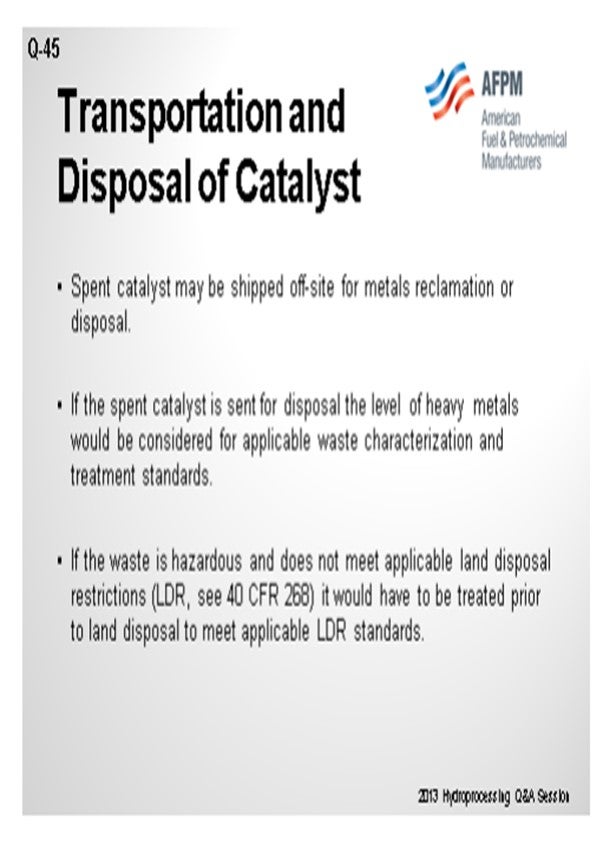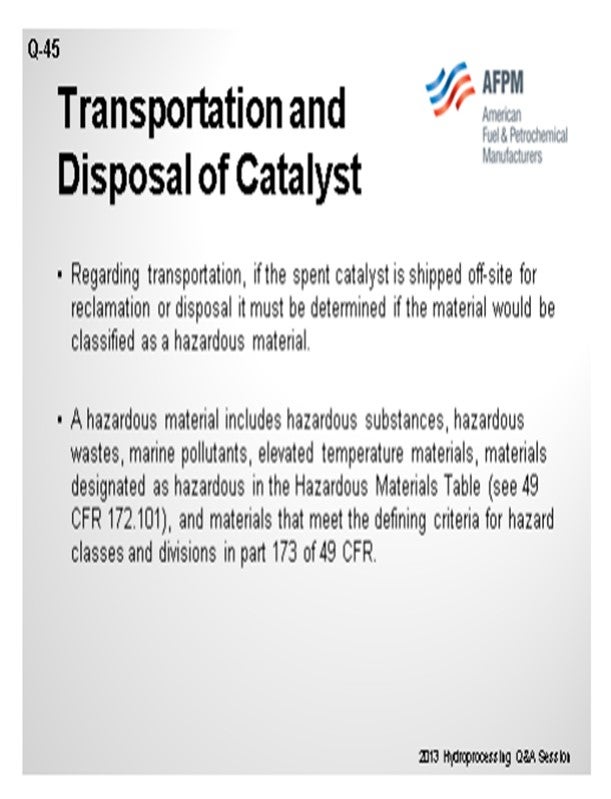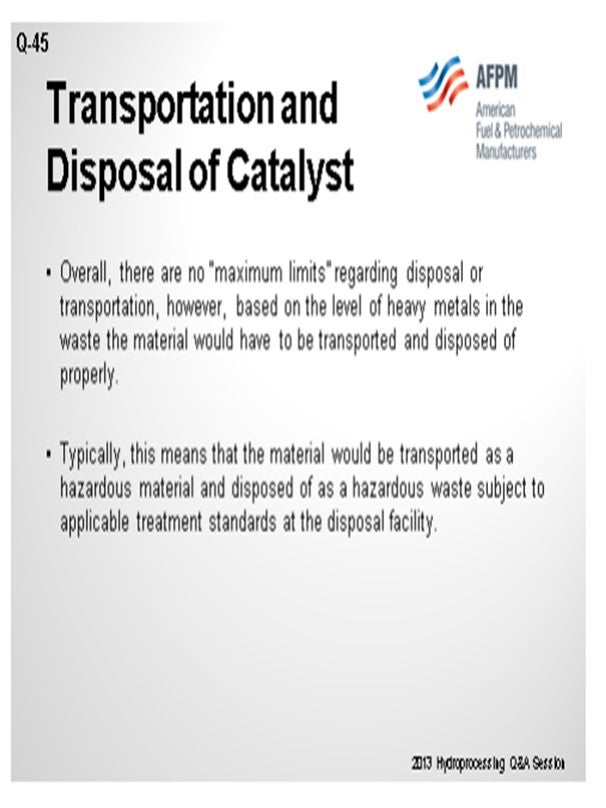Question 45: What are the procedures/rules governing the transportation and disposal of catalyst contaminated with arsenic, mercury, barium, or other heavy metals? Are there maximum limits for any of these?
SHARPE (Flint Hills Resources, LP)
The spent catalyst needs to be shipped offsite and sent for metals reclamation or disposal. If it is going for disposal, it will have to be characterized to determine if 1) it is a hazardous waste, which it is most of the time, and 2) it meets the applicable Land Disposal Restrictions (LDRs). It would have to be treated, as part of disposal, to meet the LDRs.

Regarding transportation, if the catalyst needs to be shipped offsite for reclamation, it will have to be determined if it is hazardous material or contains hazardous substance. So by default, spent catalysts generally fit into that category. Take a look at the Hazardous Materials’ Table listed on the slide.

Overall, there are no maximum limits for disposal or transportation, but the catalyst does have to be transported and disposed of properly. It ends up being classified as a hazardous waste and subject to all the laws regarding that classification.

CHRIS STEVES (Norton Engineering)
The transportation and disposal of spent catalysts are governed by DOT (Department of Transportation) and RCRA (Resource Conservation and Recovery Act) regulations. A spent catalyst with leachable levels of arsenic, mercury, or barium (or five other regulated heavy metals) above their TCLP limit, will be regulated by the U.S. EPA (Environmental Protection Agency) as RCRA hazardous waste. If the material is spent hydrotreating catalyst from the petroleum refining industry, it will automatically be regulated as RCRA hazardous waste regardless of the metals content. Regulated RCRA hazardous waste must be properly disposed of at an approved treatment, storage, and disposal facility (TSDF). The actual levels of contamination will affect the options and cost for disposal. All RCRA hazardous wastes are regulated as DOT hazardous materials when shipped offsite, and all the basic rules for hazardous materials shipment must be followed.